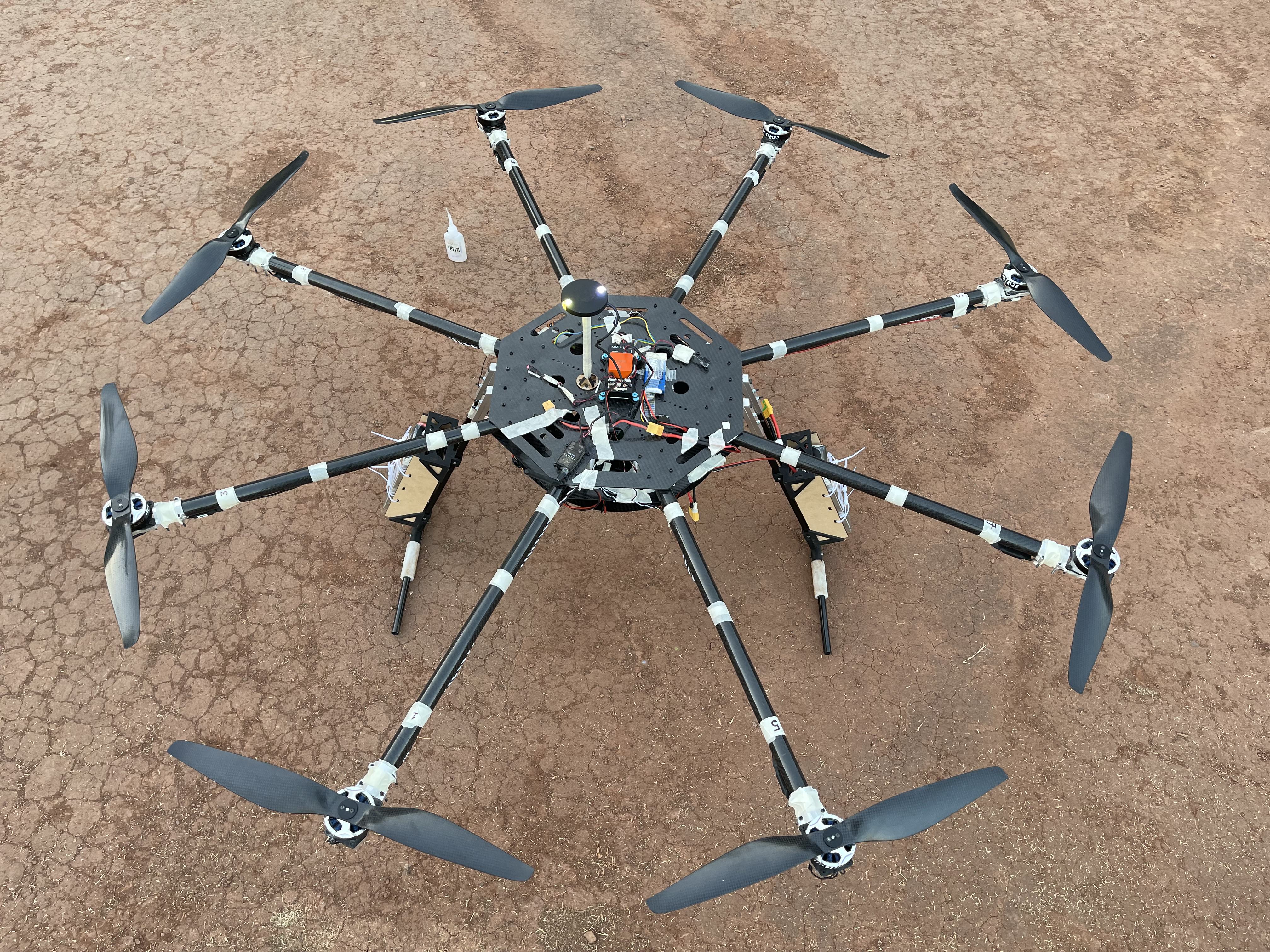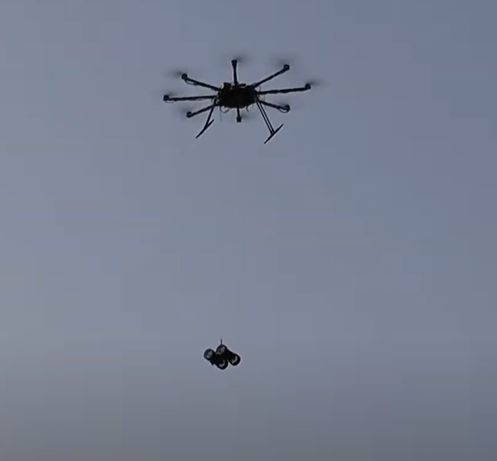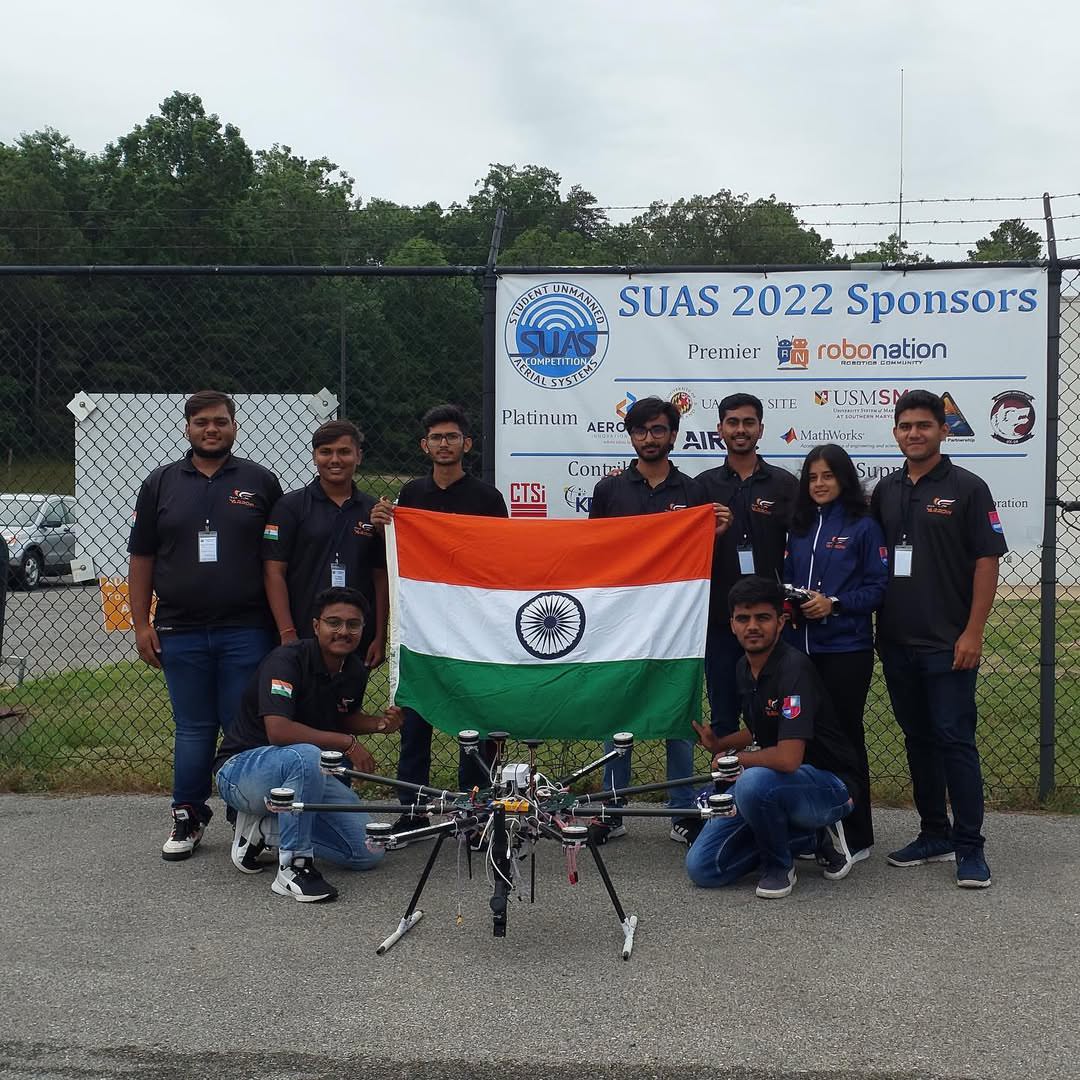
For our first UAV built entirely from the ground up, we selected an octocopter configuration, prioritizing wind
resistance and redundancy to enhance flight stability and operational safety. Given the complexities of UAV
development, these attributes were crucial for ensuring reliability in dynamic environments.
The UAV chassis was designed and manufactured in-house, using carbon fiber and aluminum to achieve an optimal
balance between strength and weight efficiency. Additionally, a 4-degree dihedral angle was introduced in the
arms, improving stability and maneuverability with only a minimal compromise in thrust. Beyond structural
advancements, we also engineered custom electronic systems, including a Power Distribution Board (PDB) and a
payload delivery mechanism, showcasing our expertise in integrated UAV electronics

As this was our first fully self-manufactured UAV, the development process required a structured, iterative
approach:
Research & Selection: After evaluating multiple UAV structures, we determined that an
octocopter with dihedral arms provided the best combination of stability and redundancy for our mission
requirements.
Structural Design & Simulation: The UAV was designed using CAD software, followed by
rigorous stress, vibration, and thermal simulations to validate its performance under real-world conditions.
Prototype Development & Bench Testing: A prototype was fabricated and subjected to
extensive bench tests to refine the aerodynamics and structural integrity before full-scale production.
Electronic System Optimization: The final component layout was strategically designed
to insulate voltage-sensitive systems and minimize electromagnetic interference (EMI) from the high-power
propulsion system. Critical electronics such as GPS and compass modules were shielded to prevent signal
disruptions.
Fail-Safe Validation: The UAV underwent tethered fail-safe testing, allowing us to
assess its response to critical failures while ensuring flight safety and system reliability.
Having previously specialized in fixed-wing UAVs, our shift to multirotor design presented new challenges. Unlike
fixed-wing aircraft, multirotors provide enhanced precision in payload delivery and the ability to hover, making
them ideal for missions requiring stationary operation and high maneuverability.
One of the most significant challenges was mitigating mid-air system failures, which had previously affected our
fixed-wing UAVs. To address this, we implemented redundant fail-safe mechanisms to ensure operational continuity
in the event of a system malfunction. Additionally, a comprehensive pre-flight safety checklist was developed,
leading to an 80% reduction in failure rates and reinforcing the UAV’s reliability.

Developing this first-of-its-kind UAV has been a transformative journey, allowing us to push the boundaries of UAV engineering. Our expertise in structural design, system optimization, and fail-safe mechanisms has laid a strong foundation for future UAV innovations, enabling us to undertake even more ambitious aerial projects.

Arrow’s participation in SUAS 2022 demonstrated our team's commitment to pushing technological boundaries and delivering high-performance UAV solutions.